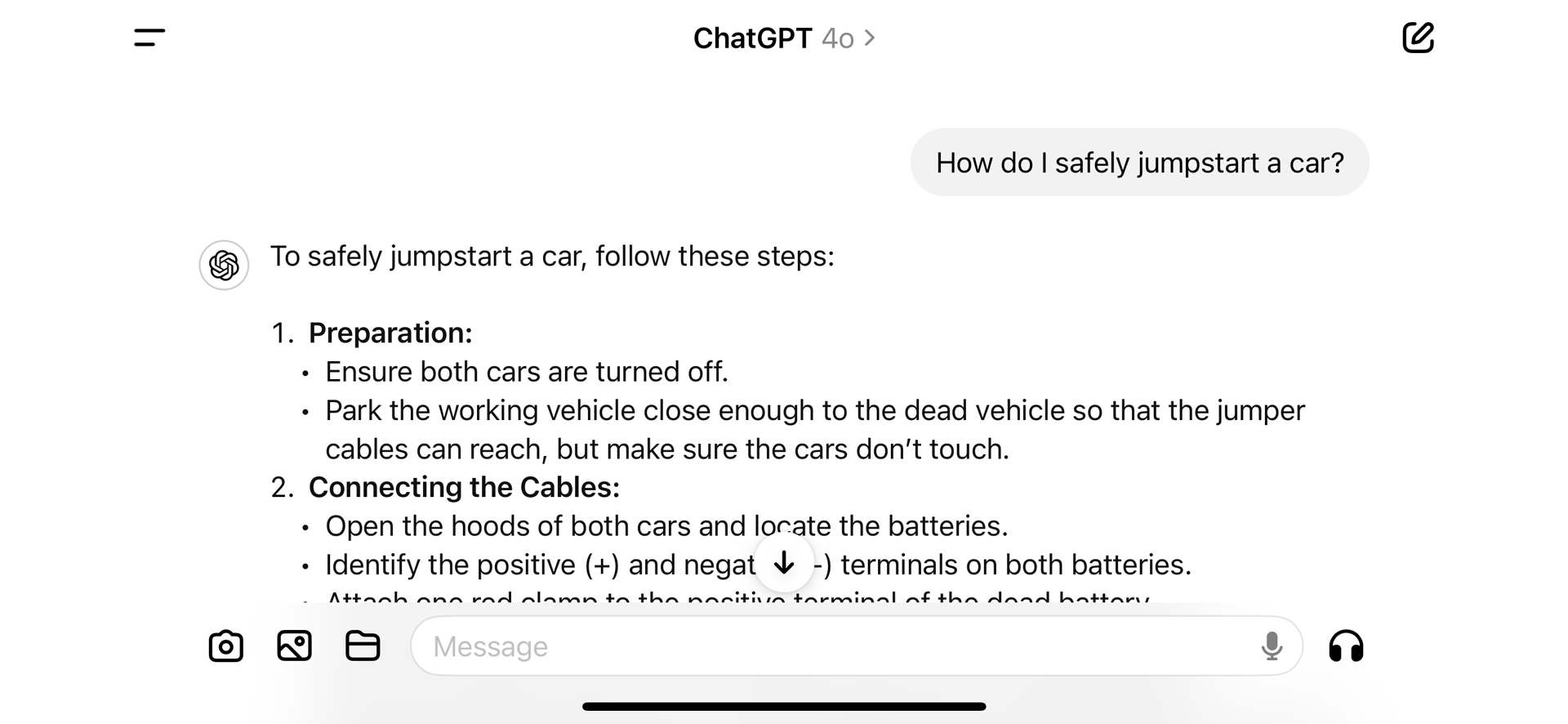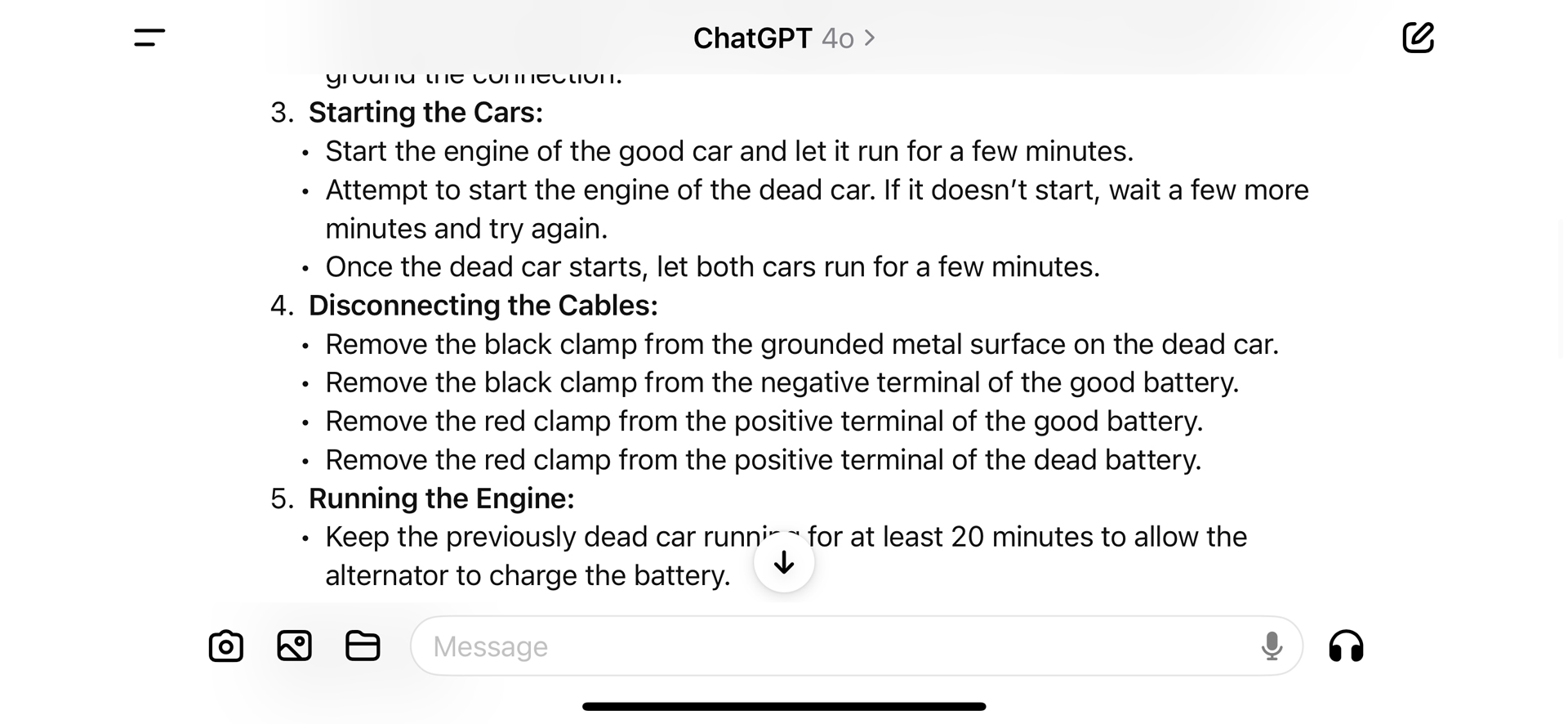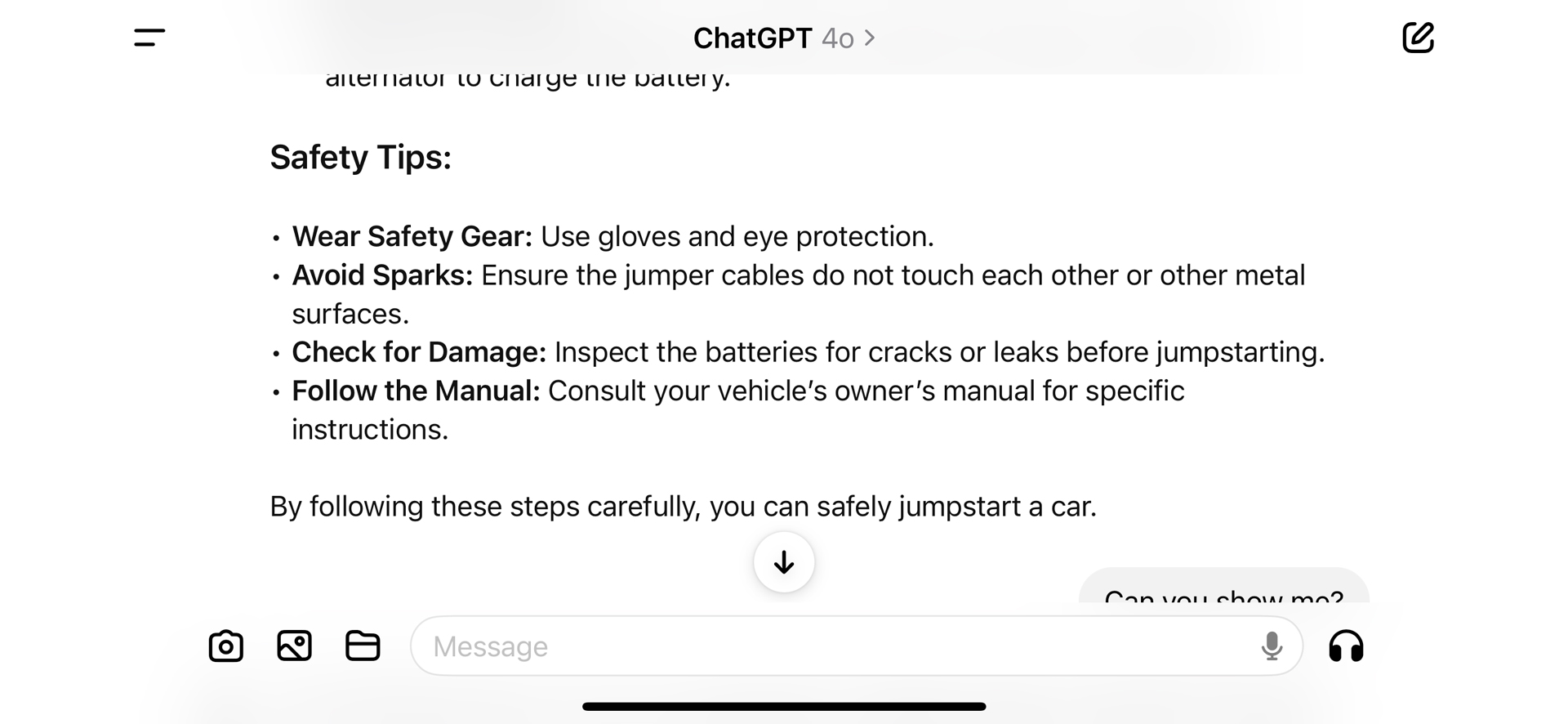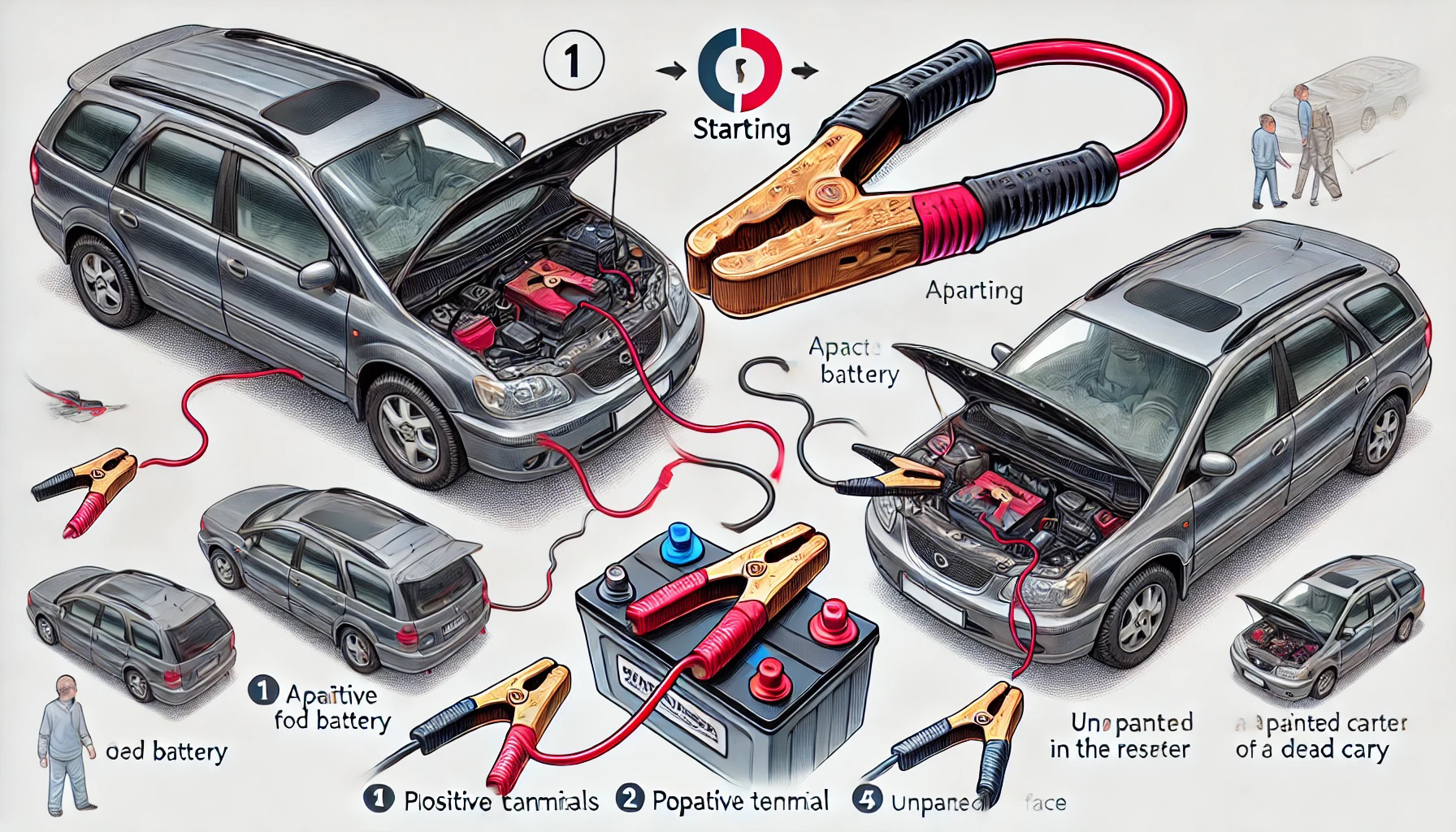ChatGPT still can't beat YouTube when it comes to getting how-to help

Generative AI stands ready to summarize, ideate, assist, and answer almost any question, but the true test of its seemingly unlimited capabilities is whether it can beat the answer OG: YouTube.
Spoiler alert: it can't
When you become an adult, there are certain skills you can or should learn. Cooking, cleaning your home, grocery shopping, minor home or apartment repairs, and basic car maintenance. As a long-time adult, I can handle most if not all these tasks, even car upkeep. However, there's one task, however that I tackle with trepidation: jumpstarting a car. Weirdly, I've had to do it multiple times in the last year, most recently when my son's car died.
Jumpstarting a dead car entails running a pair of unwieldy jumper cables from one fully charged car battery to the flat battery. A typical car battery is 12V, but it has enough amperage to zap you unconscious or worse. Even though I've done this at least a dozen times over the years, I find it hard to tell the positive terminal from the negative terminals (mostly because car batteries are so dirty you usually can't see plus or minus labels or the terminal color coding). More importantly, one jumper clamp should not be attached to the terminal and instead, for safety, should be clamped onto some metal part of the dead car as a ground.

Since my memory is faulty and this is an inherently dangerous task (these acid-filled batteries can also explode), I usually open YouTube and search 'How to jumpstart a car'. There are dozens of related queries, and a lot of videos that provide step-by-step visual guidance. I play them and pause as I complete each step. It's pretty foolproof.
With my son's car sitting dead on the street, I pondered a different path. We're in the age of AI, after all, so why not let ChatGPT 4o give it a try? Instead of playing a video, I might get clearer text instructions, and perhaps even a diagram that I could save and reuse the next time one of us leaves the interior car light on.
Help me help you
In the prompt field, I typed in 'How to safely jumpstart a car', and within seconds I had excellent, detailed instructions. It hit all the key points, including attaching one end of the jumper cables to an unfinished piece of metal on the dead car. There were even extra safety instructions. ChatGPT 4o didn't note its sources, but the information is so ubiquitous that I have to assume it came from multiple uncredited experts.
Sign up for breaking news, reviews, opinion, top tech deals, and more.



For this task, though, I needed visuals. I like to see where in the dead car ChatGPT 4o recommended I connect that port, and how it configures the cables. What I really wanted was a step-by-step illustrated guide that resembled the in-plane safety manual no one reads.
Tell and show...
"Can you show me?" I typed in the prompt.
"I can't directly show you," responded ChatGPT, "but I can generate a detailed image demonstrating the process of safely jumpstarting a car."
It didn't take long for this nicely-illustrated image to appear:

Even a casual glance, though, reveals some truly bizarre bits. The large jumper clamp is wired to itself in a loop. Other wires start with the clamp and fade into the ether. No one wire appears to be going to the right place. The main battery has four terminals and the two car batteries appear to be in the center of each car engine.
The labels are almost entirely nonsense. Here are some of the key and unintentionally comical phrases:
- Painted carter of a dead cary
- Apact battery
- Aparting
- Apative fod battery
These are instructions written by a madman. Except they're not. The illustration comes from the same generative mind that gave me the clear and lucid step-by-step instructions above. How one system could deliver two such completely different sets of instructions is beyond me.
If we're to depend on these generative systems for real help in critical situations, they can't be half right, or only be able to communicate in one form. Some people learn by reading or listening, others are visual learners. AI must accommodate all styles of learning with consistent levels of accuracy.
As for me, I silently thanked ChatGPT 4o for the good laugh and turned back to YouTube, where I got the expert, accurate, and visual guidance I needed. I managed to jumpstart my son's car without issue, and thanked goodness, once again, for YouTube, which still has all the answers – and usually from real people who know what they're doing.
You might also like
- ChatGPT explained – everything you need to know about the AI ...
- I took these ChatGPT smart glasses on a day trip to the beach, and I ...
- ChatGPT has caused a massive drop in demand for online digital ...
- Meta AI vs ChatGPT vs Google Gemini: we tell you which chatbot is ...
- How to use ChatGPT – 7 tips for beginners

A 38-year industry veteran and award-winning journalist, Lance has covered technology since PCs were the size of suitcases and “on line” meant “waiting.” He’s a former Lifewire Editor-in-Chief, Mashable Editor-in-Chief, and, before that, Editor in Chief of PCMag.com and Senior Vice President of Content for Ziff Davis, Inc. He also wrote a popular, weekly tech column for Medium called The Upgrade.
Lance Ulanoff makes frequent appearances on national, international, and local news programs including Live with Kelly and Mark, the Today Show, Good Morning America, CNBC, CNN, and the BBC.